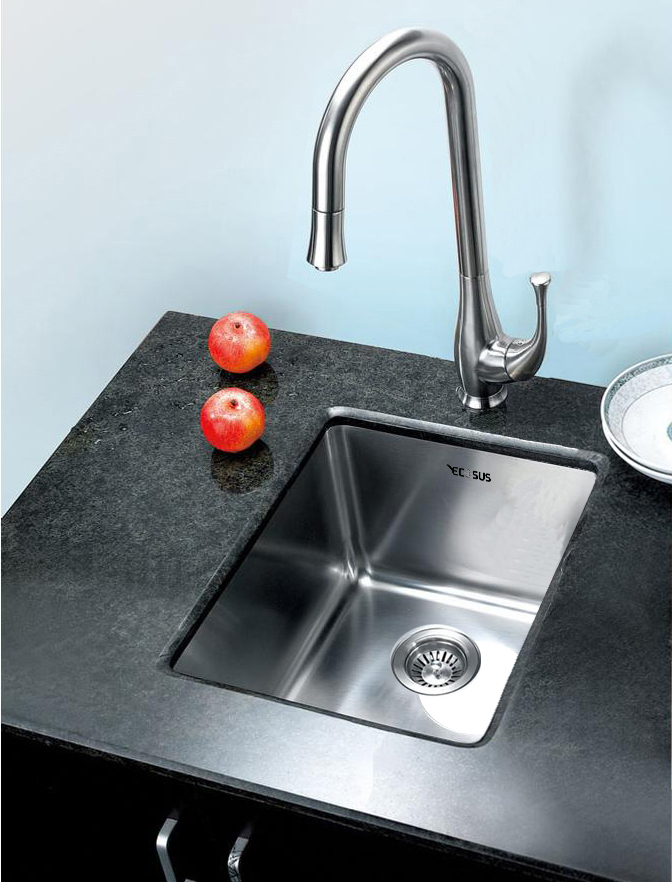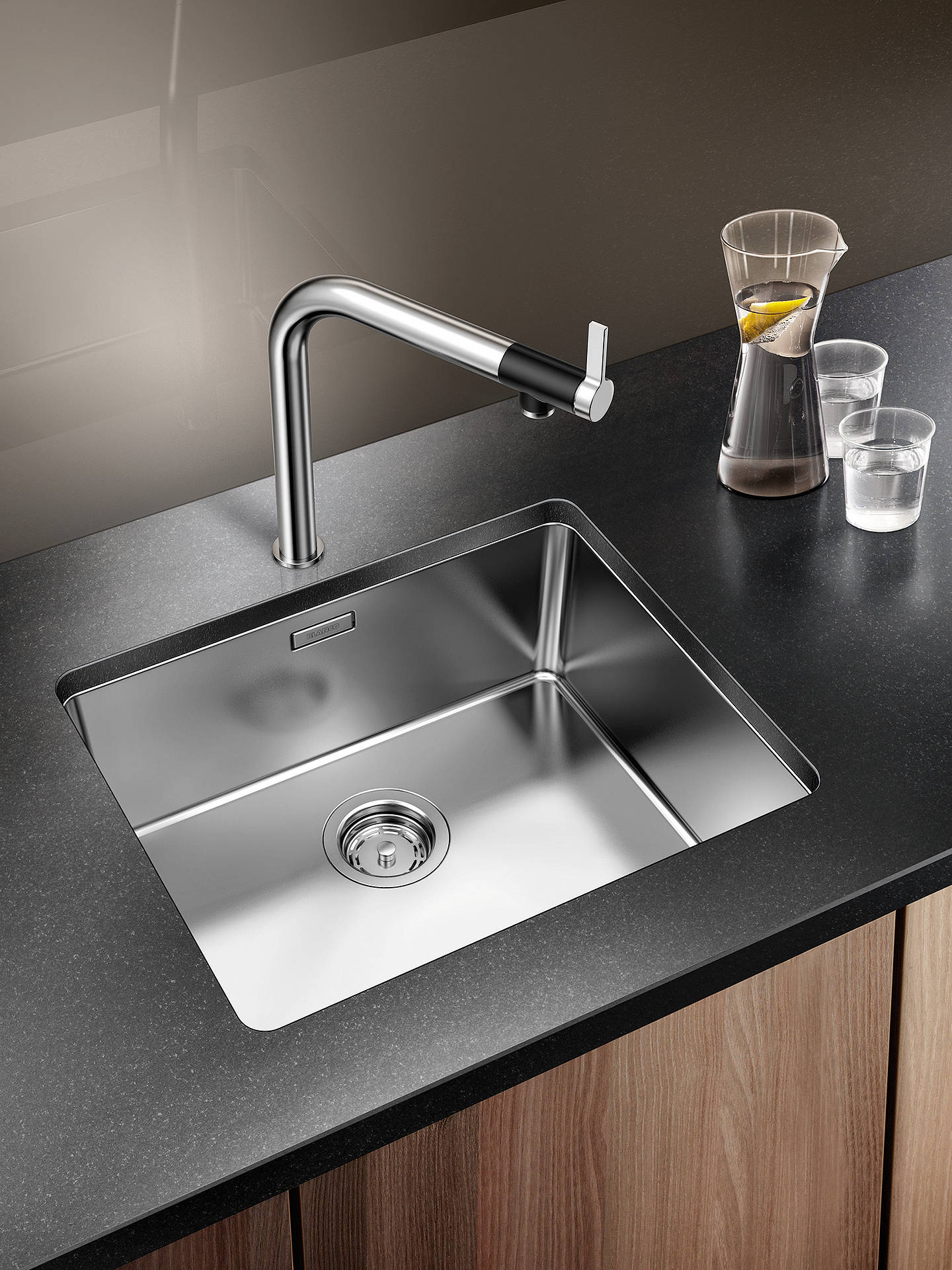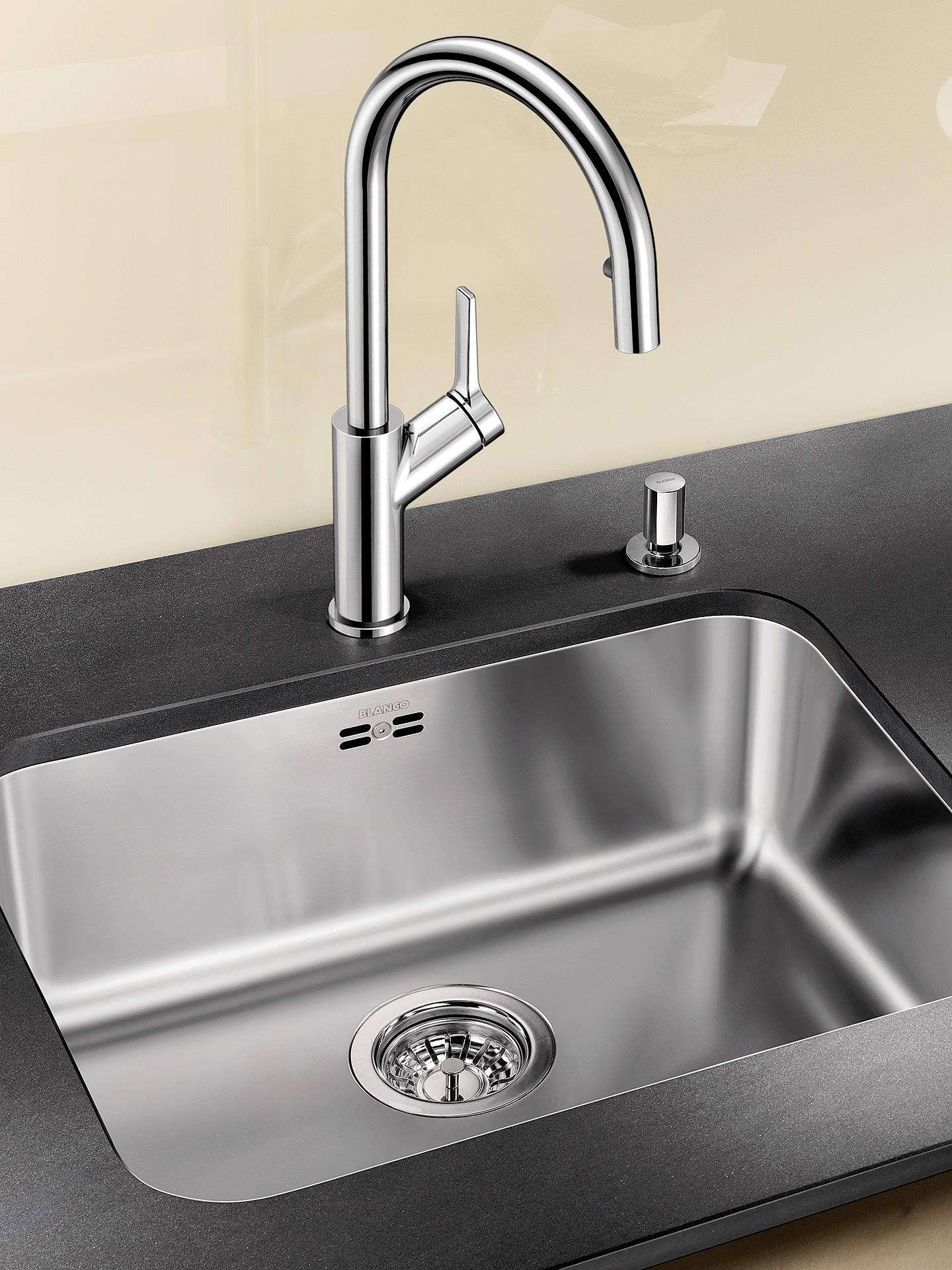Choosing a stainless steel kitchen sink can be one of the most practical and aesthetic decisions when designing or remodeling your kitchen. Not only are stainless steel sinks known for their durability and versatility, but they also add a sleek, modern touch to any kitchen style. The popularity of stainless steel sinks stems from their ability to blend seamlessly into various countertop materials and colors, as well as their ease of maintenance. However, not all stainless steel sinks are created equal. Factors like gauge thickness, mounting style, and finish play a crucial role in determining the sink’s overall performance and appearance. Understanding these elements will help ensure you pick a sink that matches your needs and enhances the look of your kitchen.
One of the first considerations when choosing a stainless steel sink is the gauge thickness. The gauge measures the thickness of the steel, with lower numbers indicating thicker material. A 16 or 18-gauge stainless steel sink is generally considered ideal for residential kitchens due to its balance of strength and noise reduction. Thicker gauges (lower numbers) tend to be more durable and resist dents and dings better. They also absorb sound better, making for a quieter sink when washing dishes or running the garbage disposal. Conversely, thinner gauges like 22 or 24 are more affordable but can be prone to denting and tend to be noisier. The choice of gauge largely depends on your budget and how often you use the sink, but investing in a thicker gauge is usually worth the long-term benefits.

The finish of a stainless steel sink is another critical aspect to consider. There are several types of finishes available, each offering a unique look and level of maintenance. Brushed or satin finishes are the most common and offer a smooth, muted appearance that helps mask scratches and water spots. Polished finishes, on the other hand, provide a more reflective, mirror-like surface that can look stunning but requires more upkeep to maintain its luster. Textured or matte finishes are also available and can add an industrial touch to your kitchen, but like polished finishes, they can be more challenging to keep clean. When choosing a finish, it’s essential to consider your lifestyle and cleaning habits. If you prefer a low-maintenance option, a brushed or satin finish is your best bet.
The mounting style of a stainless steel kitchen sink affects both the installation process and the overall look of your kitchen. There are three primary mounting styles: undermount, top-mount, and farmhouse. Undermount sinks are installed beneath the countertop, creating a seamless appearance and making it easy to wipe crumbs and spills directly into the sink. This style is highly popular in modern kitchens but requires more precise installation and works best with solid surface countertops like granite or quartz. Top-mount, or drop-in sinks, are easier to install as they are simply placed into a cutout in the countertop. While not as sleek as undermount models, they’re more budget-friendly and versatile for different countertop materials. Farmhouse sinks, also known as apron-front sinks, extend past the front of the counter, providing a unique, traditional look. They are available in stainless steel and add a distinctive focal point to the kitchen, though their installation can be more complex.
Soundproofing is another factor to consider when selecting a stainless steel sink. The natural acoustics of metal can result in a noisy sink, but many high-quality models are equipped with sound-deadening features. These include rubber padding and spray coatings that dampen noise and prevent vibrations. If you frequently use heavy pots and pans or have a garbage disposal, investing in a sink with soundproofing technology will significantly improve your kitchen experience. The thicker the sink gauge, the better the soundproofing, but additional padding and coatings enhance this feature further. Checking the sink’s specifications for these enhancements can help ensure a quieter workspace.
Another essential consideration is the size and configuration of the sink. Stainless steel sinks come in a wide range of sizes, from compact models suitable for small kitchens to expansive double-basin designs ideal for larger spaces. Single-bowl sinks are great for washing large pots and baking sheets, while double-bowl models allow for multitasking—such as soaking dishes on one side and rinsing vegetables on the other. If you prefer flexibility, some models offer triple bowls, with one large basin and two smaller compartments. The size of your sink should be proportional to the size of your kitchen and countertop. An oversized sink can overwhelm a small kitchen, while a small sink may not provide enough functionality for a larger space. Take measurements carefully and consider your daily kitchen habits when selecting the size and number of bowls.
Stainless steel kitchen sinks also come in various shapes and depths, which impact both their appearance and practicality. Traditional rectangular sinks are the most common, but you can also find curved or uniquely shaped designs that add visual interest. Deeper basins are useful for handling larger items and reducing splashback but can be harder on the back if you spend long periods at the sink. Shallower sinks are easier to reach into and ideal for tasks like rinsing fruits and vegetables but may not accommodate bulky cookware. Finding the right depth is a matter of balancing your physical comfort and intended use. A depth of 8 to 10 inches is typically a good middle ground for most households.
One often overlooked aspect of stainless steel sinks is the type of corners they feature. Sinks can have either sharp or rounded corners, which significantly affect both the look and maintenance of the sink. Sharp corners create a more contemporary, angular appearance but can be harder to clean as dirt and grime tend to build up on the tight edges. Rounded corners, also known as radius corners, are easier to keep clean and maintain due to their softer curves. If you want a modern aesthetic without sacrificing ease of maintenance, consider a sink with a small radius—offering the best of both worlds.
Drain placement is another small but impactful detail in stainless steel sinks. Most sinks have center-set drains, but you can also find models with rear-set or corner drains. Rear-set drains provide more usable space in the sink basin and allow you to place items directly over the drain without obstructing water flow. They also free up space underneath the sink, making it easier to store cleaning supplies or install a garbage disposal. Corner drains are less common but can be useful for unique kitchen layouts. The position of the drain may seem like a minor detail, but it can affect the sink’s functionality and how you use the space.
When it comes to maintenance, stainless steel sinks are relatively low upkeep but still require regular care to stay looking their best. The material is resistant to rust and staining, but hard water spots and scratches can accumulate over time. Using a mild cleaner and a soft cloth is usually sufficient for everyday cleaning. Avoid abrasive pads or harsh chemicals, as they can damage the finish. For deeper cleaning, a mixture of baking soda and water works well to remove stains and restore shine. Rinse the sink thoroughly after each use to prevent water spots, and consider using a sink grid to protect the bottom from scratches.

Choosing the right accessories can further enhance the functionality of a stainless steel kitchen sink. Accessories like fitted colanders, cutting boards, and drying racks that sit over the sink are popular additions. These items turn the sink into a multi-functional workstation, allowing you to prep, cook, and clean more efficiently. Sink grids, as mentioned earlier, protect the sink’s surface from scratches and dents, while a soap dispenser can free up counter space. Investing in high-quality accessories designed to fit your sink model ensures a custom, built-in look and maximizes usability.
Stainless steel sinks can be paired with various faucet styles, each offering different features and benefits. Pull-down faucets, with their extendable spray heads, provide flexibility for rinsing dishes and cleaning hard-to-reach areas. Bridge faucets, with their classic design, are a great choice for farmhouse-style sinks, while single-handle faucets offer a sleek, modern appearance and easier temperature control. Consider the height and reach of the faucet to the sink size to avoid splashing. Matching the faucet finish with the sink’s finish creates a cohesive look and ties the elements of your kitchen together.
While stainless steel is a durable material, there are a few considerations to keep in mind for long-term performance. Over time, stainless steel can show signs of wear, such as scratches or discoloration from heavy use. Using a sink grid and avoiding harsh chemicals can minimize these effects, but if your sink does get scratched, there are stainless steel restoration kits available that can buff out minor damage. Regular maintenance and careful use will keep your sink looking great for years to come. In commercial kitchens, where heavy use is expected, choosing a thicker gauge and a finish designed to hide wear and tear is essential.
Stainless steel sinks are available at various price points, making them accessible for nearly any budget. Basic models with thinner gauges and simpler finishes are affordable and offer good value for smaller kitchens or light use. High-end models, with thicker gauges, custom finishes, and added features like soundproofing or integrated accessories, can be more expensive but offer enhanced performance and a premium look. When choosing a sink, consider it an investment in your kitchen’s functionality and appearance. Spending a little more upfront can save you from the inconvenience of replacing or repairing a lower-quality sink down the road.

Common Mistakes to Avoid
One of the most common mistakes when choosing a stainless steel sink is selecting the wrong gauge thickness. Thinner gauges may seem like a cost-effective choice, but they’re more prone to dents, scratches, and noise, making them a poor long-term investment.
Another mistake is ignoring the finish of the sink. While polished finishes look stunning, they show scratches and water spots more easily, leading to more maintenance. Choosing the wrong mounting style can also cause issues. For example, installing an undermount sink without proper support can lead to sagging or separation from the countertop over time.
Many people also overlook the importance of proper measurements, resulting in a sink that’s either too big or too small for the space. Lastly, neglecting to consider soundproofing can lead to a noisy, less enjoyable kitchen experience. Investing in a sink with sound-dampening pads or coatings can make a significant difference.

What gauge should I choose for a stainless steel kitchen sink?
For a residential kitchen, a 16 or 18-gauge stainless steel sink is ideal. These gauges offer a good balance of durability, soundproofing, and resistance to dents. Thicker gauges (lower numbers) are more durable and quieter, while thinner gauges are less expensive but more prone to damage and noise.
Is an undermount or top-mount sink better?
The choice between an undermount and a top-mount sink depends on your countertop material and aesthetic preferences. Undermount sinks provide a seamless look and make it easier to clean the countertop, but they require precise installation and solid surface countertops like granite or quartz. Top-mount sinks are easier to install and can work with any countertop material but have a more traditional appearance.
How do I prevent scratches on my stainless steel sink?
Using a sink grid or protective mat at the bottom of your sink can help prevent scratches from pots and pans. Avoid using abrasive pads or harsh chemicals that can damage the finish. Regular cleaning with a soft cloth and a mild cleaner will keep the sink looking its best.

What finish is best for a stainless steel sink?
A brushed or satin finish is ideal for most kitchens because it hides scratches and water spots better than polished or mirrored finishes. If you want a more reflective, high-end look, a polished finish can be stunning but requires more maintenance to keep it shiny and free from marks.
Why does my stainless steel sink have water spots?
Water spots are usually caused by minerals in hard water. To prevent them, wipe the sink dry after each use and use a cleaner designed for stainless steel. A mixture of vinegar and water can also help remove mineral deposits and restore the sink’s shine.
Can stainless steel sinks rust?
High-quality stainless steel sinks are resistant to rust, but improper care can cause rust spots. This usually happens if steel wool is used for cleaning, leaving behind small metal particles that can rust. Regular cleaning and avoiding harsh materials will prevent rust and maintain the sink’s appearance.

Related Posts:

